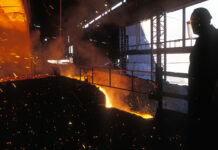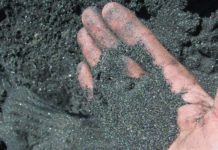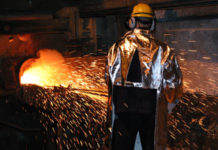
THOUSANDS of jobs will be affected in terms of a restructuring announced by the Glencore-Merafe Joint Venture, South Africa’s largest ferrochrome producer.
Merafe Resources said in a statement to the Johannesburg Stock Exchange on Monday afternoon that it had through the joint venture initiated a restructuring process in terms of Section 189 of the Labour Relations Act.
“Shareholders are hereby advised that whilst collaborative engagement with all relevant stakeholders continues to take place, the venture has commenced with a consultation process … effective from September 1”.
“The consultation process is as a result of the continuing economic pressures facing the South African ferrochrome industry and the lack of sustainable industry solutions that could alleviate the pressures in the near to medium term,” the company said.
Voluntary severance packages and potential redeployment of affected employees will be discussed as part of the consultation, it added.
Merafe has a 20.5% stake in the JV while Glencore owns the balance.
The restructuring is no great surprise considering the Joint Venture had this year suspended ferrochome production from its Lion Complex facilities, ostensibly to conduct maintenance. Merafe also suspended its Boshoek smelter and its Wonderkop operations. This follows the shuttering of 10 other smelters.
The bottom line is power cost inflation. While state-owned power utility Eskom and the Joint Venture have a customised power supply tariff in place, it does not go far enough.
Merafe, Glencore and Eskom are said to be working on a new tariff but it is not yet agreed despite the distress at the ferrochrome operations being extensively flagged. Electricity minister, Kgosientsho Ramokgopa said earlier this year a proposal was before Cabinet on improved tariffs for intensive energy users.
“There’s already a special tariff, but unfortunately that special tariff is not special enough for us to actually be viable in South Africa,” said Japie Fullard, head of operations at the Merafe-Glencore Joint Venture in August. “So we need an electricity tariff that’s even better than what we are seeing now,” he added.
He also rated the chance of an agreement on a new tariff quite highly, though it has not materialised to date. At stake is some 2.3 million tons (Mt) in the JV’s ferrochrome production – equal to a third of South Africa’s annual exports in the mineral.
South Africa has lost an estimated 300,000-350,000 jobs due to the closure of 14 energy-intensive smelters across the country.
In 2024, South Africa supplied about 3.3Mt of ferrochrome out of a global production total of 17.5Mt. Merafe has installed capacity of 2.3Mt a year.
“We are going to restart smelters,” Ramokgopa said previously.
The Joint Venture will continue to produce chrome ore for export but even that faces a potential headwind as the South African government has hatched plans to impose a tariff on unbeneficiated ore exports.











